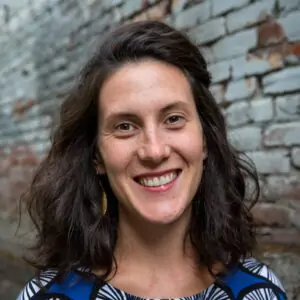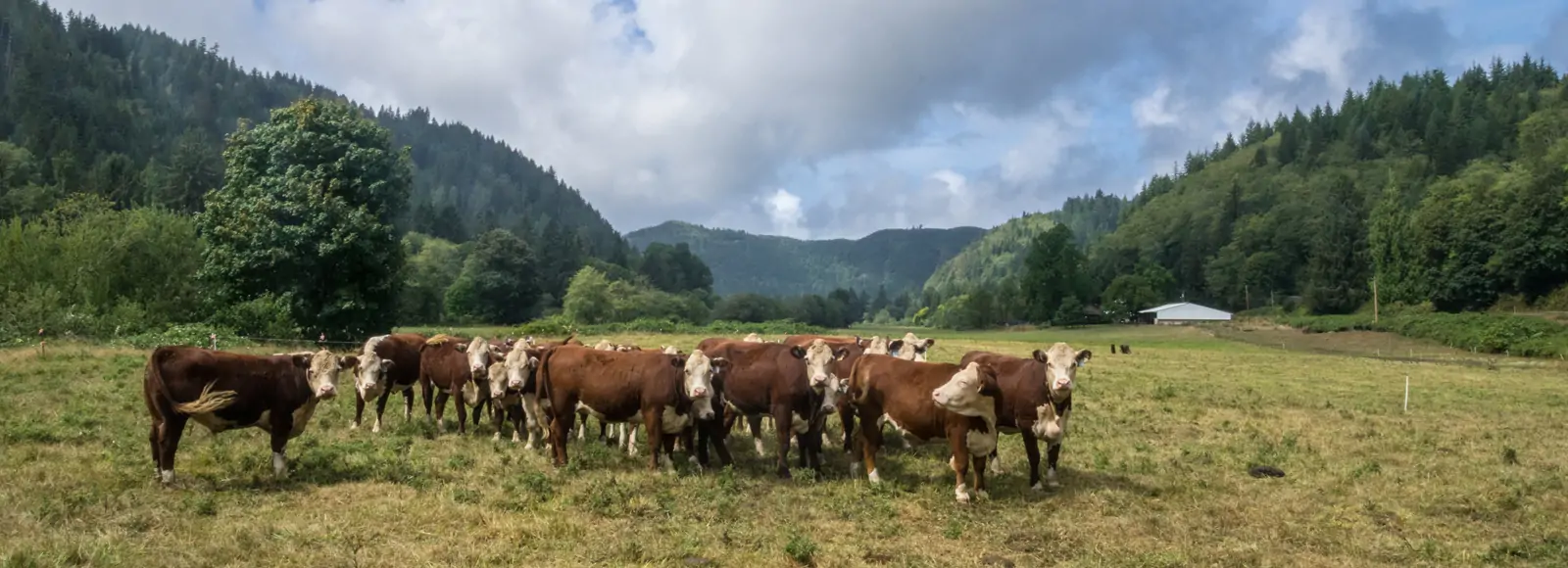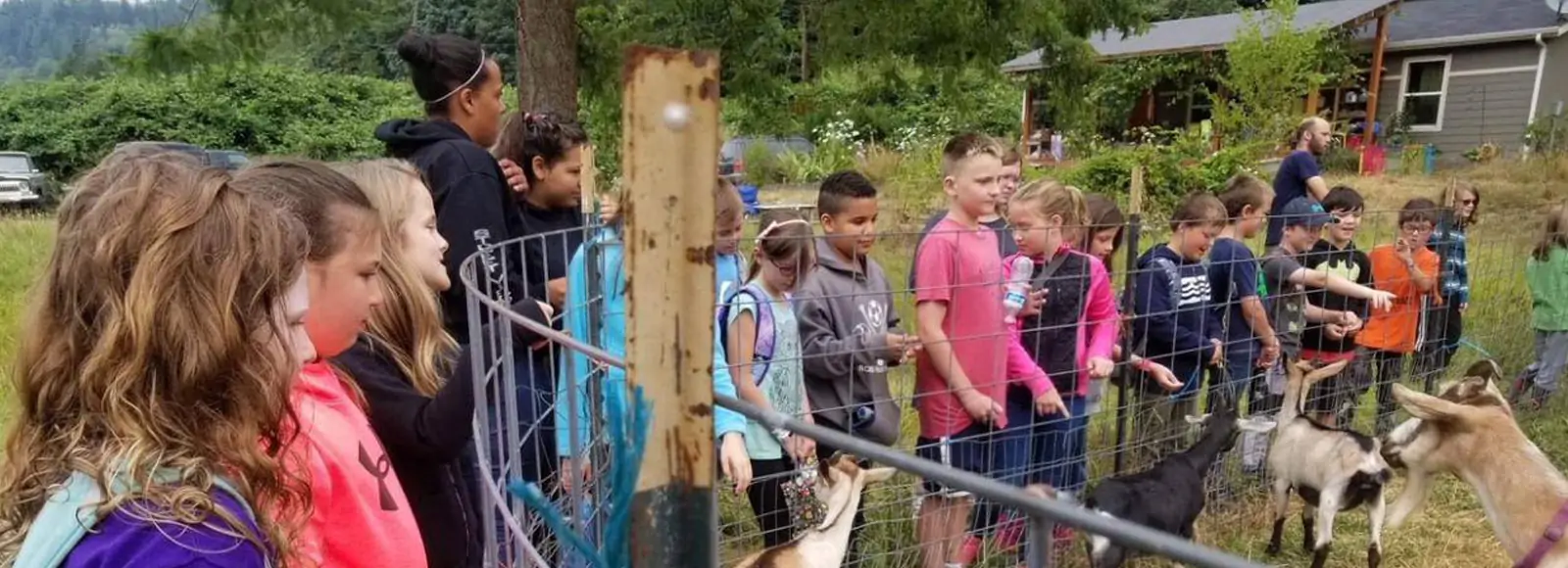
Director of Community Systems and Capital
Jared Gardner relaxes with his cows at Nehalem River Ranch.
Jared Gardner and his family run a grass-fed and finished beef operation called Nehalem River Ranch, just inland from Oregon’s North coast. Jared joined the first cohort of our Ag of the Middle Accelerator, a business development program for farmers, ranchers, and fishermen across the Pacific Northwest.
Our Ag of the Middle Program Manager, Maia Hardy, who also farms with her family at My Brother’s Farm in Creswell, Oregon, interviewed Jared about his experience navigating what our participants have said is one of the most important concepts they learn about in the Accelerator: cash flow.
The application period for the next Ag of the Middle Accelerator cohort is open through October 7, 2019.
We bought an existing grass-fed beef operation in 2014, and added pork in the spring of 2014, so we’re just starting our fifth year. We started out with the business model that we bought, which at that time was 100 percent direct-to-market beef shares, and we replicated that for pork. Other than that, we used a few other marketing avenues — Friends of Family Farmers’ Fill Your Pantry event was huge for us in the early years.
When we bought the Ranch, we immediately tapped into NRCS funding for nutrient management, which helped us transition into a non-chemical and more organic and animal-welfare-centric operation. We also sought mentorship from local, organic, pasture-based operations and mentorship from Holistic Management consultants from the Savory Institute.
Mostly, though, it was a lot of grit.
The cash flow from the business model that we inherited was enough to pay the bills, no land costs, and no salary, so basically a break-even business the first year. We really had to push to get to where we were making a profit, paying taxes, everything like that. But we didn’t use any outside debt or credit instruments to get through the first couple years which added to our stress levels.
“
The Accelerator has given us an approach to thinking through how to develop what we want, how we want.
We both quit our jobs when we bought the operation, had zero outside income coming in, though we had a lot of savings — about a year’s worth of farm expenses. We sunk all of that in the first two years, partly because we had an historic drought followed by an historic flood and that tapped us a lot.
My wife thought I was crazy, thinking that we could buy this business and improve it without any livestock experience. And she was right. But we’ve done it.

Cows on pasture at Nehalem River Ranch. Courtesy of Broken Banjo Photography
Just because I have a background in finance doesn’t mean that I had expertise in cash flow management and I think that there’s a huge difference there.
The Accelerator has given us an approach to thinking through how to develop what we want, how we want versus just taking an opportunity, and running with it, and realizing later that, cash flow-wise, it’s not very productive.
“
The Ag of the Middle cohort, and the Value Added producer grant helped us carve out the time and have the resources to develop a business model that helped us by helping others.
I’ve never had a business that has this mismatch in terms of the timing of incomes and expenses. Our annual feed costs occur in one season, and our income comes much later, so we need a five- or seven-month operating line to pay for our winter feed, hire people to come out and cut our fields, and then store it up for us.
The Ag of the Middle program helped us look at cash flow on a monthly basis and a yearly basis, all at the same time.
Through the process for the Value Added Producer Grant we had the opportunity to really think about what would be next.
About two and half years ago, we got into USDA retail cuts because we wanted to get into direct sales of smaller quantities. We started doing sampler packs on beef, which opened up the door to get into restaurants.We figured if we could sell into restaurants, and eventually schools and hospitals, then we could grow.
(Editor’s note: Farmers and ranchers can sell “shares” (half or whole animals) direct to consumers. In order to sell to grocery stores, restaurants, and institutions, they must process their animals at an USDA-inspected facility. Nehalem River Ranch was one of five Accelerator participants who received Value Added Producer Grants with support from Ecotrust.)

Students gather at Nehalem River Ranch during an NRCD field trip.
The problem for growth is we’re land constrained, there are only so many animals we can raise within our ecological system.
We can’t just scale up business. It’s not like adding more labor and manufacturing more widgets. We have a finite amount of grass we can grow based on soil biology and weather. But through the grant process we realized that other farmers around us were really struggling with marketing, sales, and logistics so we started an aggregation company.
“
I think big picture, structural, and community-minded, knowing that if all the local farms are healthy then we have a more vibrant local food system which is going to come back to benefit us too.
Our friends in this valley were taking their really high-quality animals to the auction and getting paid pennies on the dollar. We started with three other cattle producers buying anything and everything they would sell us at slightly more than they had been getting, laying all the cards on the table in terms of what we would be making. That really helped us and them, and to say yes to more restaurants to get more local food into the restaurant scene.
Ideologically, we’re really wired to build a food system in a way that keeps money circulating locally. The Ag of the Middle program, and this cohort, and the Value Added producer grant helped us carve out the time and have the resources to ask questions and develop a business model that helped us by helping others.
You have to find that middle ground between doing the best you can while also moving the other levers forward. For us, cash flow comes from sales, which comes from marketing. You have to have a good product, but you can’t just have a good product and expect people to find you. That’s the balance. It’s really hard to navigate.
I think big picture, structural, and community-minded, knowing that if all the local farms are healthy then we have a more vibrant local food system which is going to come back to benefit us too.
We lucked out landing in a community of great support and that has been a catalyst for us. When you have that kind of support, you want to pay it forward, you want to give where you have received. As long as we can each weather the short-term cash flow crunches, I hope we can continue to do so.


